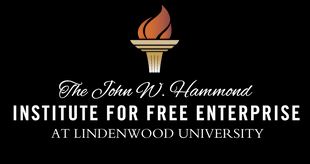Document Type
Article
Publication Title
Center for Economics and the Environment: Policy Series
Abstract
Most people associate air pollution with automobiles and factories. But air pollution has been a part of human existence for thousands of years, and accounts of noxious urban air go back to ancient times. The Roman statesman Seneca bemoaned, “the stink, soot, and heavy air” of Rome in 61 AD.1 London has suffered from air pollution since the Middle Ages, when coal became a common fuel in smithies and lime burners. The problem was bad enough that King Edward I in 1285 created a commission to improve the city’s air quality.2
Today, despite vast increases in energy production, motorized transportation, and economic activity in general, American cities enjoy cleaner air than at any time in the last century. Monitoring data show air pollution had already been declining for decades before the Clean Air Act was adopted in 1970 and air quality has continued to improve during the last few decades. Existing requirements for motor vehicles, factories, and consumer products ensure that air quality will continue to improve for decades to come. The health effects literature indicates that air pollution has become a minor factor in people’s health and welfare.
Despite America’s extraordinary success in mitigating air pollution, surveys show great and increasing public concern over air quality. Many people mistakenly believe air pollution has been getting worse and will continue to worsen in the future, and that air pollution is still a serious threat to public health.
Americans receive most of their information about air pollution from journalists, government regulators, environmental activists, and scientists. Unfortunately, much of this information exaggerates air pollution levels and health risks, and obscures or ignores positive trends. As a result, much of what Americans “know” about air pollution is false.
Exaggerating harm from air pollution makes us worse off overall. The public’s interest is best served by an accurate portrayal of risk. Environmental regulations are not free. People ultimately bear regulatory costs, because those costs are passed along in the form of higher prices for useful goods and services, lower wages, and lower returns on investments. We have many needs and aspirations and scarce resources with which to fulfill them. When we devote resources to an exaggerated risk, we give up opportunities to address other real and substantial risks, or to pursue other improvements to our health and quality of life. Air pollution alarmism also foments unnecessary public fear.
People can make informed decisions about air pollution policy only if they have accurate information on the risks they face, the costs and benefits of further reductions in pollution emissions, and the benefits of devoting scarce resources to air pollution control versus other public and private priorities. The question isn’t whether we would prefer less air pollution, of course we would. But in the real world, we have to make tradeoffs among competing goals and aspirations. If risks from air pollution are exaggerated, we will make these tradeoffs poorly, to the detriment of our overall health and welfare.
This paper explores air pollution trends and health effects and their portrayal in the media and other popular sources of information.
Publication Date
4-2006
Creative Commons License

This work is licensed under a Creative Commons Attribution-NonCommercial-No Derivative Works 4.0 International License.
Recommended Citation
Schwartz, Joel, "Breathing Easier About Air Quality" (2006). Center for Applied Economics. 34.
https://digitalcommons.lindenwood.edu/cee/34


